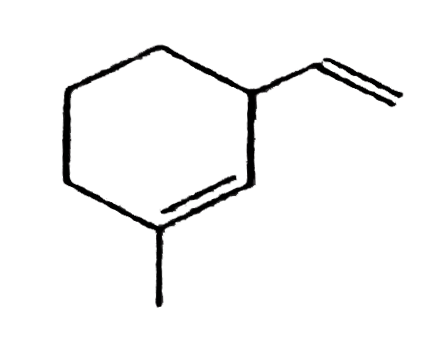The addition of Hbr to CH2=CHCOOH results in the formation of.
α−Bromopropanoic acid
β−Bromopropanoic acid as the major product
None of the above
Both (a) and (b) in equal proportion.
The correct Answer is:B
To solve the problem of what compound is formed when HBr is added to CH₂=CHCOOH (acrylic acid), we can follow these steps:
Step 1: Identify the Reactants
The reactant is acrylic acid, which has the structure CH₂=CHCOOH. It contains a double bond (C=C) and a carboxylic acid group (COOH).
Step 2: Understand the Reaction Mechanism
When HBr is added to an alkene, the reaction typically follows Markovnikov's rule. This means that the hydrogen (H) from HBr will attach to the carbon with the most hydrogen atoms already attached, while the bromine (Br) will attach to the carbon with fewer hydrogen atoms.
Step 3: Formation of Carbocation
In this case, the double bond between the two carbon atoms will break. The addition of HBr leads to the formation of a carbocation. The H+ ion will add to the terminal carbon (the one with two hydrogens), resulting in a more stable secondary carbocation at the other carbon.
Step 4: Nucleophilic Attack by Bromide Ion
Once the carbocation is formed, the Br- ion (which is negatively charged) will attack the positively charged carbon atom. This will lead to the formation of a new bond between the carbon and bromine.
Step 5: Final Product Formation
The final product will be a bromo acid. The structure of the product can be represented as CH₂Br-CH₂-COOH. This compound is known as beta-bromo propanoic acid, as the bromine is attached to the beta carbon relative to the carboxylic acid group.
Conclusion
The addition of HBr to CH₂=CHCOOH results in the formation of beta-bromo propanoic acid.
Final Answer
The compound formed is beta-bromo propanoic acid (CH₂Br-CH₂-COOH).
---
The reactant is acrylic acid, which has the structure CH₂=CHCOOH. It contains a double bond (C=C) and a carboxylic acid group (COOH).
When HBr is added to an alkene, the reaction typically follows Markovnikov's rule. This means that the hydrogen (H) from HBr will attach to the carbon with the most hydrogen atoms already attached, while the bromine (Br) will attach to the carbon with fewer hydrogen atoms.
In this case, the double bond between the two carbon atoms will break. The addition of HBr leads to the formation of a carbocation. The H+ ion will add to the terminal carbon (the one with two hydrogens), resulting in a more stable secondary carbocation at the other carbon.
Once the carbocation is formed, the Br- ion (which is negatively charged) will attack the positively charged carbon atom. This will lead to the formation of a new bond between the carbon and bromine.
The final product will be a bromo acid. The structure of the product can be represented as CH₂Br-CH₂-COOH. This compound is known as beta-bromo propanoic acid, as the bromine is attached to the beta carbon relative to the carboxylic acid group.
The addition of HBr to CH₂=CHCOOH results in the formation of beta-bromo propanoic acid.
The compound formed is beta-bromo propanoic acid (CH₂Br-CH₂-COOH).
Topper's Solved these Questions
- CARBOXYLIC ACIDS AND THEIR DERIVATIVESBOOK - CENGAGE CHEMISTRY ENGLISHCHAPTER - CARBOXYLIC ACIDS AND THEIR DERIVATIVESEXERCISE - Exercises (Assertion-Reasoning)
10 Videos
- CARBOXYLIC ACIDS AND THEIR DERIVATIVESBOOK - CENGAGE CHEMISTRY ENGLISHCHAPTER - CARBOXYLIC ACIDS AND THEIR DERIVATIVESEXERCISE - Exercises Archives (Single Correct)
10 Videos
- CARBOXYLIC ACIDS AND THEIR DERIVATIVESBOOK - CENGAGE CHEMISTRY ENGLISHCHAPTER - CARBOXYLIC ACIDS AND THEIR DERIVATIVESEXERCISE - Exercises (Multiple Correct)
34 Videos
- BIOMOLECULESBOOK - CENGAGE CHEMISTRY ENGLISHCHAPTER - BIOMOLECULESEXERCISE - Exercises Archives (Analytical And Descriptive)
8 Videos
- CHEMICAL KINETICSBOOK - CENGAGE CHEMISTRY ENGLISHCHAPTER - CHEMICAL KINETICSEXERCISE - Archives Subjective
23 Videos
Similar Questions
Elimination of HBrfrom 2 bromobutane results in the formation of .
View SolutionThe addition of HBr is the easiest with
View SolutionGive the product of the reaction of Ph2CHCH2OH with HBr and explain its formation.
View SolutionWhich can not be the major product formed upon addition of 1
mole of HBr in the following reactions is:
 HBr1mol→ major
HBr1mol→ major
View SolutionThe systematic name of (CH3)2CHCOOH is:
View SolutionStatement-1: Addition of HBr of CH2=CH−NO2 follows anti-Markovnikoff's rule
and
Statement-2: Electron withdrawing NO2 group destabilizes carbocation on the adjacent carbon.
View SolutionWhich can not be the major product formed upon addition of 1
mole of HBr in the following reactions is:
 HBr1mol→ major
HBr1mol→ major
View SolutionIn the adddition of HBr to propene in the absence of peroxides, the first step involves the addition of-s
View SolutionAlkenes undergo electrophilic addition reactions. Electrophilic addition to unsymmetrical alkenes involve the formation of a more stable carbocation intermediate in the first step which is rate determining and carbocation is then attacked by a nuclephile to form product
HO−CH2−CH2−CH2−CH=CH2I2−−−−−→NaHCO3 major product formed is
View SolutionGiven, H2(g)+Br2(g)→2HBr(g),ΔH01 and standard enthalpy of condensaion of bromine is ΔH02, standard enthalpy of formation of HBr at 25∘C is
View Solution
